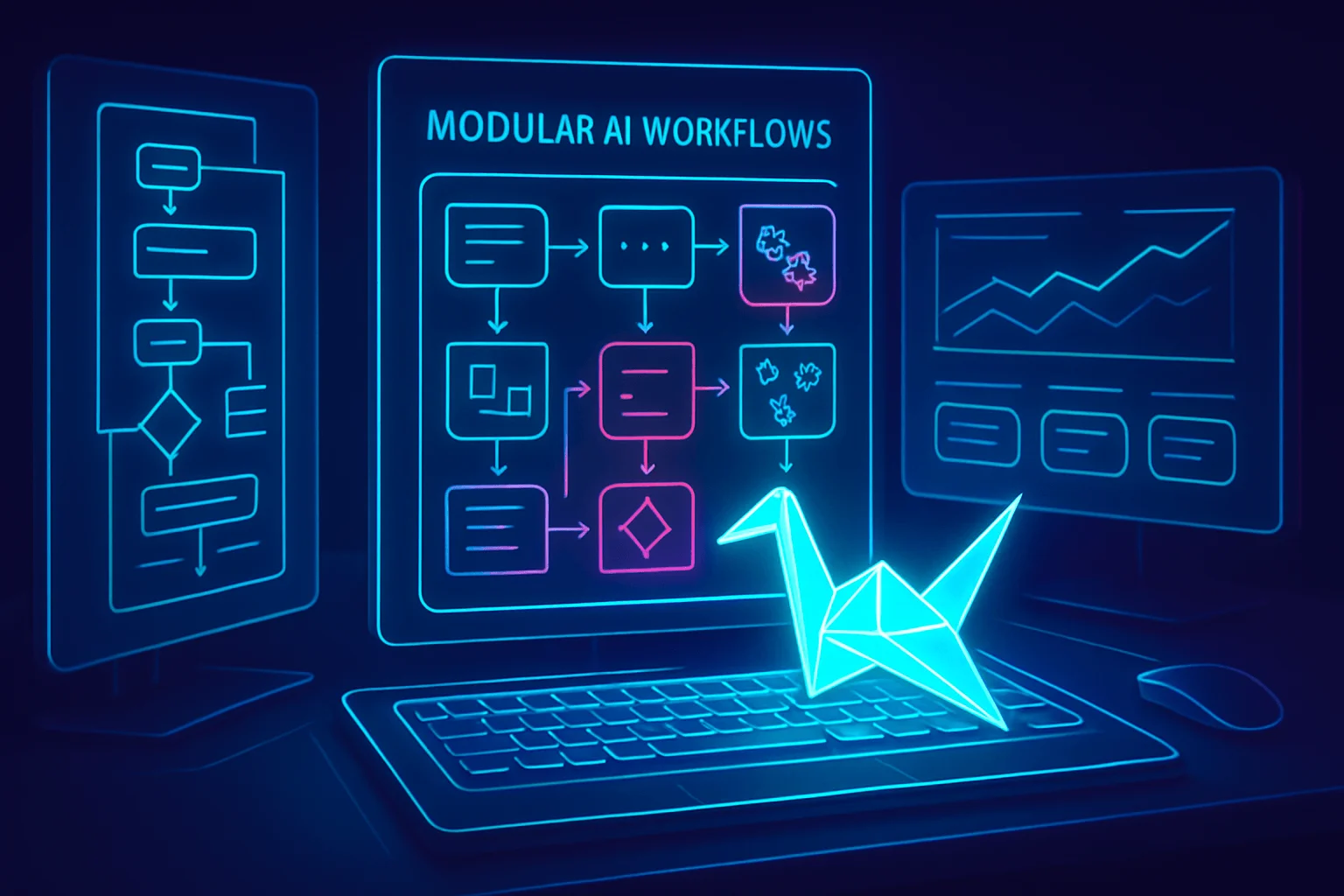How Artificial Intelligence Transforms and Limits Business Automation

A spreadsheet that reconciles itself, emails that answer customers before you’ve finished reading them, invoices that process automatically—artificial intelligence makes these possibilities sound tantalizingly close. But is the hype keeping pace with reality? As organizations race to boost efficiency and streamline operations, understanding what AI truly brings to business automation has never been more urgent. Too often, decision-makers are left navigating a maze of inflated promises, unsure which tools will deliver measurable impact versus those that might overpromise and underdeliver.
In this article, we’ll unravel the capabilities and boundaries of AI-driven automation. You’ll learn where smart software excels—turning tedious tasks into hands-off workflows—and where human judgment or traditional systems still reign supreme. We’ll guide you through the common myths clouding industry conversations, highlight real-world examples of AI’s strengths and weaknesses, and provide frameworks for assessing automation opportunities in your own business. Whether you’re a leader charting a digital strategy or a professional optimizing daily tasks, this guide offers clarity to inform your next step in the evolving landscape of intelligent automation.
Myth 1: AI Can Fully Replace Human Judgement in Business Process Automation
The belief that artificial intelligence is an all-encompassing substitute for human intelligence in business process automation is widespread, but it’s ultimately misleading. Despite remarkable progress in natural language processing, predictive analytics, and pattern recognition, AI has intrinsic limitations. Human judgement, emotional intelligence, creative problem-solving, and contextual awareness remain outside the core capabilities of even the most advanced AI systems.
How it happens:
- Overreliance on AI-driven automation for decision-making in hiring, performance reviews, or customer conflict resolution.
- Delegating critical ethical choices to AI rather than having human oversight.
- Automating client communications or sales negotiations without human checks.
- Replacing human project managers with workflow bots for end-to-end project delivery.
The Truth:
AI excels at repetitive, data-driven, and rule-based tasks but struggles with ambiguous scenarios, ethical considerations, and decisions involving empathy, trust, or creativity. Meaningful automation requires humans “in the loop” for oversight, escalation, and subjective decision-making.
Real Scenario:
A global bank deployed AI to streamline loan approvals by crunching customer data and automating creditworthiness assessments. While overall processing times improved, edge cases—like young entrepreneurs with little traditional credit history but strong business plans—were consistently rejected. After complaints and public backlash, the bank reinstated human specialists to review flagged applications, balancing efficiency gains with critical human oversight and judgement.
Myth 2: AI Implementation is Plug-and-Play for Any Business Process
There’s a misconception that deploying AI is as simple as purchasing an off-the-shelf product and letting it run. In reality, meaningful integration of AI into business workflows requires strategic customization, robust data infrastructure, and significant change management. Many organizations underestimate the resources and planning required to adopt AI solutions that genuinely streamline processes and yield ROI.
How it happens:
- Expecting instant automation benefits without process reengineering or employee training.
- Failing to adapt data pipelines or address integration with legacy software.
- Neglecting data quality and labeling required for supervised machine learning.
- Underestimating necessary stakeholder engagement and workflow redesign.
The Truth:
Effective AI-powered business automation requires upfront customization, ongoing maintenance, and thoughtful alignment with existing processes. Plug-and-play only works for narrowly defined, uniform tasks with clean data, and even then, oversight is mandatory.
Real Scenario:
A mid-sized logistics company invested in an AI-powered demand forecasting system, expecting it to instantly yield supply chain efficiencies. However, the implementation failed due to fragmented data sources, inconsistent inventory records, and lack of employee training. Success only followed after months of process re-engineering, hiring data stewards, and deep integrations with ERP systems—demonstrating that AI is a journey, not a switch.
Myth 3: AI-Powered Automation Eliminates Human Error Entirely
It is tempting to believe that AI-powered systems, immune to fatigue or distraction, can eliminate human error. While it’s true that AI can significantly reduce certain types of mistakes—such as calculation errors or missed alerts—it often introduces new categories of risk and error. Misconfigurations, flawed data, or biased models can result in subtle or large-scale automation failures.
How it happens:
- Poor training data resulting in biased or inaccurate predictions from AI models.
- Automated workflows executing erroneous transactions due to faulty logic or unanticipated edge conditions.
- Relying on AI-generated analytics for business-critical decisions without human validation.
- Trusting bots for document or contract processing without auditing their outputs.
The Truth:
AI simply shifts the nature of possible errors—it can eliminate manual slip-ups but, if left unchecked, propagate mistakes at scale or in new ways. Human oversight, validation processes, and periodic audits are essential components of robust, responsible automation strategies.
Real Scenario:
An insurance company automated claim approvals using a machine learning model trained on historical data. However, the model inadvertently replicated a bias against certain zip codes, unfairly flagging legitimate claims for review or rejection. The error was only caught after a spike in complaints—and after financial harm to policyholders—prompting a review of the AI’s training data and additional human-in-the-loop checkpoints.
Myth 4: AI-Powered Automation is Too Expensive for Small and Medium Businesses
Many small and medium businesses (SMBs) dismiss AI automation as a luxury reserved for large enterprises with massive budgets. However, increasingly accessible AI-powered tools and SaaS offerings are democratizing automation capabilities for organizations of all sizes, provided that leaders take a solution-oriented approach to incremental adoption.
How it happens:
- Belief that only custom-built AI solutions are effective.
- Avoiding all forms of workflow automation due to high perceived costs.
- Overlooking affordable, cloud-based AI tools tailored for SMB needs.
- Ignoring grants, pilot programs, or vendor partnerships that can lower entry barriers.
The Truth:
AI adoption is more accessible and affordable than ever. SMBs can leverage automation through targeted, cloud-based tools with minimal up-front investment. By automating routine paperwork, invoicing, CRM management, and simple analytics, smaller companies can improve efficiency and competitiveness.
Real Scenario:
A regional accounting firm implemented an AI add-on for their cloud-based accounting software to automate receipt processing and expense categorization. The system cost less than $200/month and freed up valuable staff time, enabling accountants to focus on advisory services. The investment paid for itself within one quarter, disproving the myth that automation is out of reach for smaller players.
FAQs
Q1: How can businesses ensure their AI-powered automation avoids unintended bias?
A:
Begin by auditing historical data for imbalances or discriminatory trends before feeding it into AI models. Involve a cross-functional team—including data scientists, domain experts, and frontline employees—in reviewing AI outcomes for overlooked biases. Set up periodic reviews of model outputs (e.g., random sampling and analysis of decisions) and leverage explainable AI tools to understand model logic. Develop escalation and retraining protocols that allow continuous refinement. Document and communicate policies that guide ethical AI use throughout the organization.
Q2: What practical steps can organizations take to prepare their processes and data for successful AI automation?
A:
Assess and clean your existing data for accuracy, completeness, and relevance to the business process targeted for automation. Streamline the process itself—remove redundancies, clarify decision points, and standardize workflows—that AI can enhance, not just accelerate. Invest in integrating siloed data sources into a unified database or data lake. Train key staff to interpret and oversee AI-powered outputs. Start with pilot projects in contained workflows to demonstrate ROI before scaling. Foster a culture of continuous feedback and process improvement.
Q3: How should businesses balance automation and human involvement in customer-facing processes?
A:
Deploy AI to handle routine, high-volume inquiries (e.g., FAQs, order status, password resets) via chatbots or self-service platforms to maximize speed and efficiency. Design seamless hand-off mechanisms where unresolved cases, complaints, or complex requests immediately escalate to trained human agents. Regularly monitor customer satisfaction and make adjustments based on pain points or negative feedback. Maintain transparency—ensure customers know when they are interacting with AI as opposed to humans. Train customer service agents to specialize in tasks that require empathy, problem-solving, and creative negotiation.
Key Truths
- Human oversight and collaboration remain critical: Even the most sophisticated AI is best used to augment, not replace, human leaders and staff in business process automation.
- High-quality, well-structured data is foundational: Automation success depends on data that is clean, consistent, relevant, and responsibly curated.
- AI shifts (but does not eliminate) the risk of error: Regular audits, monitoring, and retraining of AI models are essential to catch new forms of error or bias that automation can introduce.
- Customization, integration, and training drive ROI: Off-the-shelf AI solutions typically require thoughtful integration with existing workflows and upskilling of staff for maximum impact.
- Incremental adoption enables manageable risk and measurable gains: Piloting automation in focused areas allows businesses to prove the value, build expertise, and scale up confidently.
- SMB-friendly AI tools and resources are plentiful: Cloud-based, subscription solutions make AI automation both affordable and accessible to organizations of all sizes.
- Ethical and regulatory compliance is non-negotiable: Regular reviews, transparency, and documentation safeguard against unintended consequences and keep automation aligned with legal and social norms.
- Continuous feedback loops fuel improvement: Collect user and stakeholder feedback on automated processes to iterate and refine AI-powered workflows over time.
- Effective change management ensures success: Proactive communication, training, and stakeholder engagement turn AI adoption into a broadly beneficial business transformation, not just a technical upgrade.
As we’ve explored, AI unlocks remarkable efficiencies but also has clear boundaries—human insight, creativity, and complex decision-making remain irreplaceable. Today’s leaders must distinguish AI’s hype from its genuine abilities, applying the tech where it thrives yet staying mindful of its limits. By grounding your automation strategies in realistic expectations and thoughtful integration, you’ll maximize both business outcomes and future resilience. Have these insights changed your view of AI in your organization? Share your experiences or thoughts below, and join our community to keep learning how to drive truly smart automation—one thoughtful decision at a time.



